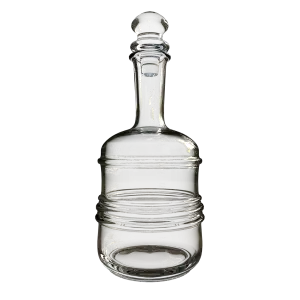Master the Art of Cleaning a Cast Iron Pan: A Step-by-Step Guide for a Pristine Home Kitchen

Cleaning a cast iron pan may seem like a daunting task, but with the right techniques, it can be a simple and rewarding process. A well-maintained cast iron pan not only ensures optimal cooking results but also adds charm to your kitchen. In this step-by-step guide, we will walk you through the process of cleaning a cast iron pan, from gathering the necessary supplies to storing it properly. By following these instructions, you'll be able to master the art of cleaning and maintain a pristine home kitchen. So let's dive in and discover the secrets to keeping your cast iron pan looking as good as new!
Gather the necessary supplies
To effectively clean a cast iron pan, it is important to gather the necessary supplies beforehand. Here's what you'll need:
1. A stiff-bristled brush: Look for a brush specifically designed for cleaning cast iron pans. The bristles should be strong enough to remove any stuck-on food without scratching the surface.
2. Hot water: Make sure you have access to hot water, as this will help loosen any food particles and make them easier to remove.
3. Coarse salt: Keep some coarse salt handy, as it acts as a natural abrasive and helps scrub away stubborn residue from the pan.
4. Dish soap (optional): While some purists prefer not to use dish soap on their cast iron pans, it can be used sparingly if desired. Just make sure it is mild and doesn't contain any harsh chemicals that could damage the seasoning of the pan.
5. Paper towels or clean cloth: You'll need these for drying the pan after cleaning.
By having these supplies ready, you'll be well-prepared to tackle the task of cleaning your cast iron pan effectively and efficiently.
Scrub the pan with a brush and hot water
Scrubbing the pan with a brush and hot water is an essential step in cleaning a cast iron pan. Start by rinsing the pan under hot water to remove any loose debris. Then, using a stiff-bristled brush, gently scrub the surface of the pan in circular motions. Make sure to pay extra attention to any stubborn food residue or stuck-on bits. The hot water will help to loosen and lift away any remaining dirt or grime. Be careful not to use soap at this stage, as it can strip away the seasoning of the pan. Once you have thoroughly scrubbed the pan, rinse it again under hot water to remove any remaining residue. This step will ensure that your cast iron pan is clean and ready for the next use.
Use salt to remove stubborn residue
To remove stubborn residue from your cast iron pan, one effective method is to use salt. After scrubbing the pan with hot water, sprinkle a generous amount of coarse salt onto the surface. Then, take a damp cloth or sponge and use it to scrub the salt into the pan. The abrasive texture of the salt helps to break down any remaining food particles or residue. Continue scrubbing until the surface feels smooth and clean. The salt will also help to absorb any lingering odors in the pan. Once you are satisfied with the cleanliness of the pan, rinse it thoroughly with hot water to remove all traces of salt.
Rinse the pan thoroughly
After scrubbing the cast iron pan with hot water and a brush, it's important to rinse it thoroughly to remove any remaining residue. Hold the pan under running water and use your hands or a clean cloth to ensure all the soap and food particles are washed away. Make sure to pay attention to the corners and edges of the pan, as these areas can often trap debris. Rinse until the water runs clear, indicating that the pan is clean. Thorough rinsing is crucial to prevent any soapy or salty residue from affecting the flavor of future dishes cooked in the pan.
Dry the pan completely
After rinsing the pan thoroughly, it is crucial to dry it completely before moving on to the next step. Leaving any moisture on the surface of the cast iron pan can lead to rusting and damage over time. To dry the pan, use a clean kitchen towel or paper towels to absorb any remaining water. Make sure to get into all the nooks and crannies, including the handle and any ridges or grooves in the pan. It's important to be thorough in this step to ensure that no moisture is left behind. Once the pan is completely dry, you can proceed to the next step of applying a thin layer of oil for seasoning.
Apply a thin layer of oil
7. Apply a thin layer of oil
Once your cast iron pan is dry, it's important to apply a thin layer of oil to prevent rust and maintain its non-stick surface. Start by choosing a high smoke point oil such as vegetable oil or flaxseed oil.
Using a paper towel or cloth, apply a small amount of oil to the entire surface of the pan, including the handle. Make sure to coat both the interior and exterior evenly. Be careful not to use too much oil as it can become sticky.
Next, heat the pan over medium-low heat for about 5 minutes. This will help the oil penetrate into the pores of the cast iron, creating a protective barrier.
After heating, carefully wipe off any excess oil with a clean paper towel. The pan should have a smooth and shiny appearance.
Remember to repeat this process every time you clean your cast iron pan to keep it in optimal condition.
By applying a thin layer of oil, you'll not only protect your cast iron pan from rust but also enhance its natural non-stick properties.
Store the pan properly
Store the pan properly: Once your cast iron pan is clean and dry, it's important to store it correctly to maintain its quality. Avoid stacking other pans on top of it, as this can cause scratches and damage the seasoning. Instead, place a paper towel or cloth between each pan to provide a protective barrier. Store the pan in a cool, dry place to prevent any moisture from accumulating and causing rust. If you have limited storage space, consider hanging the pan using a sturdy hook or placing it in a dedicated cast iron rack. By storing your cast iron pan properly, you'll ensure its longevity and be ready for your next culinary adventure.
In conclusion, mastering the art of cleaning a cast iron pan is essential for maintaining a pristine home kitchen. By following this step-by-step guide, you can ensure that your cast iron pan remains in top condition for years to come. Remember to gather the necessary supplies, scrub with hot water and a brush, use salt for stubborn residue, rinse thoroughly, dry completely, apply a thin layer of oil, and store properly. With these simple steps, you can enjoy the benefits of cooking with a well-maintained cast iron pan and create delicious culinary delights in your own kitchen. Happy cooking!
Published: 16. 01. 2024
Category: Home



